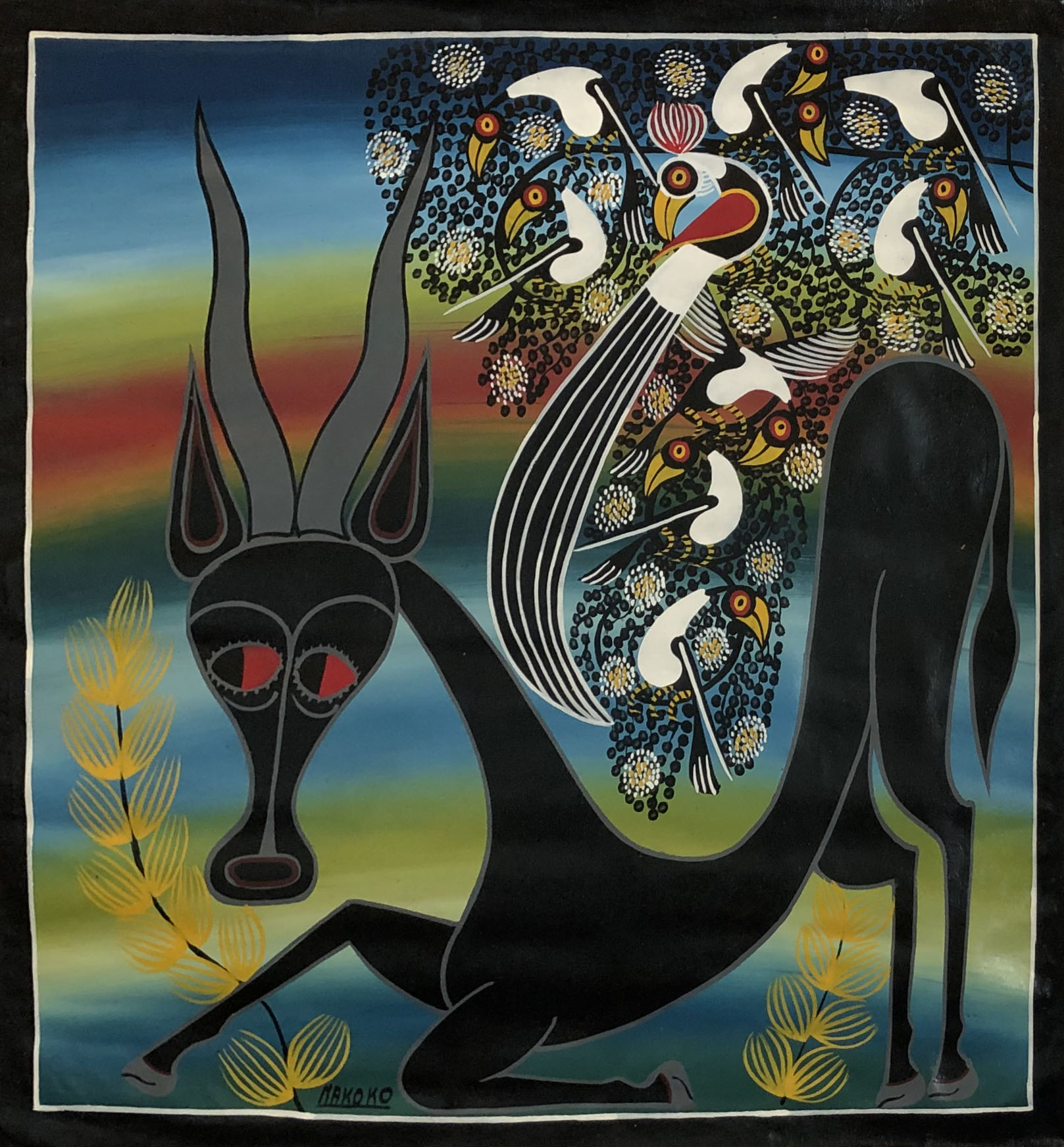 |
| Saidi Nakoko, Painting, 1999 or before. Fowler Museum at UCLA |
Edward Saidi Tingatinga (1939-1972) worked the reception desk at Tanzania's University Hospital of Dar es Salaam. Art was his side hustle. His wife Agata Mataka sold his paintings at a marketplace frequented by Western tourists. The buyers preferred Tingatinga's superflat depictions of African wildlife, especially the "big five" species of lion, leopard, rhino, elephant, and African buffalo. Though Tingatinga died young, he taught students to paint in his style, and
his school continues to the present day. It is the subject of the Fowler Museum's "Tingatinga."
Western collectors of African art have long chased a phantom of authenticity. "Tourist" and "airport" art have been pejoratives. More recently scholars have come to appreciate the vernacular (non-art school) art made for export as part of a global dialog of influences. The Fowler Museum and late UCLA scholar/curator Doran H. Ross were crucial in this reappraisal. (Currently on view at the Fowler is another essential African painting show, on Kwame Akoto/the Almighty God, through Nov. 20, 2022.)
The Tingatinga exhibition occupies the central hallway and is subject to glare from the glazed courtyard. Most of the works, executed in colorful bicycle paint, are hung on the wall unstretched, much as they might have been displayed for sale. The exhibition has nothing by E.S. Tingatinga himself. It centers on a selection of Tanzanian export painting purchased by the museum in 1999 and presumed to date from not too long before. The cleverness of style and optic dazzle are high throughout, yet you'd be hard put to distinguish individual hands. Most artists are represented with a single painting.
In Saidi Nakoko's painting of a black antelope (top of post), the creature's head is a zoomorphic mask. Its impossibly swayback posture creates room for a patterning of birds in trees. But none of these elements were the artist's unique invention.
 |
| Mr Rubuni, Painting, 1999 or before |
The zebra at center right is twerking in much the same way in this painting by Mr. Rubuni. But his Op Art-inflected painting is from a whole different universe.
 |
| Mr. Thabit, Painting, 1999 or before |
It's equally unlike this painting by Mr. Thabit, drawing on the Florida school of game fish illustration.
 |
Kambili, Painting, 1999 or before
|
Several paintings have decorative still life backgrounds similar to those of Flemish illuminated manuscripts.
 |
| Mikidadi Bush, Painting, 1999 or before |
This painting by Mikidadi Bush is a boisterous take on globalization. Gorilla-head papparazi
shoot the Big Five species kicking back for beer and karaoke.
"Tingatinga" runs through Jan. 8, 2023.





Comments
Entities like the Lucas Museum of Narrative Art should be interesting, while other cultural institutions, by contrast, may be hurt by too much so-called egalitarianism.